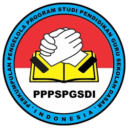Mixed Reality (MR) dalam Pembelajaran Folklor dalam Perspektif Guru Dan Siswa Sekolah Dasar
DOI:
https://doi.org/10.35568/naturalistic.v6i1.1515Keywords:
folklore, instructional_media, miixed_realityAbstract
The development of the 21st century has had a major impact on developments in various aspects of life including economic, social, and educational aspects. In this regard, education in the 21st century is faced with a number of major challenges, one of which is to develop students who are technologically literate but also culturally literate. Thus, there is a need for a change to the pattern of learning in Indonesian education today that further develops high knowledge, understanding, and skills in line with 21st century technological advances but still ignores core cultural knowledge. In line with this, the first step in realizing this research is to design a mixed reality (MR)-based folklore learning media to develop students' learning abilities and cultural literacy. In line with this, the research aims to determine the perspectives of teachers and elementary school students in West Java on the use of mixed reality in folklore learning. This research was conducted using a descriptive method. The instruments used to collect data are observation guidelines, interview guidelines, and questionnaires. The data was processed using descriptive statistics. Based on the results of the study, it can be stated that the mixed reality media used in folklore learning in the view of teachers and students in elementary schools in West Java is able to motivate students to learn and the media developed is considered very good in quality, function, and benefits.
Downloads
References
Baiduri, R., & Khairani, L. (2017, December). Revitalization of Value and Meaning Toba Batak Folklore in the Formation of Character Education of Children. In 2nd International Conference on Social and Political Development (ICOSOP 2017) Atlantis Press.
Barrett, R., Gandhi, H. A., Naganathan, A., Daniels, D., Zhang, Y., Onwunaka, C., ... & White, A. D. (2018). Social and tactile mixed reality increases student engagement in undergraduate lab activities. Journal of Chemical Education, 95(10), 1755-1762.
Dean, S. R. (2017). Development and Validation of a Multicultural Consciousness Instrument. Journal of Student Affairs Research and Practice, 54(2), 175-188.
Dipima, B., & Aklmar, M.S. (2019). Blending folklore with technology as language teaching and learning tools: role and impact.
Essmiller, K., Asino, T. I., Ibukun, A., Alvarado-Albertorio, F., Chaivisit, S., Do, T., & Kim, Y. (2020). Exploring mixed reality based on self-efficacy and motivation of users. Research in Learning Technology, 28.
Hui, S. K. F., & Cheung, H. Y. (2015). Cultural literacy and student engagement: The case of technical and vocational education and training (TVET) in Hong Kong. Journal of Further and Higher Education, 39(4), 553-578.
Johnson, P. C. (2014). Cultural literacy, cosmopolitanism and tourism research. Annals of Tourism Research, 44, 255-269.
Lee, J. H. M., Lee, F. L., & Lau, T. S. (2006). Folklore-based learning on the web— pedagogy, case study, and evaluation. Journal of Educational Computing Research, 34(1), 1-27.
Lindgren, R., & Johnson-Glenberg, M. (2013). Emboldened by embodiment: Six precepts for research on embodied learning and mixed reality. Educational researcher, 42(8), 445452.
Liu, W., Cheok, A. D., Mei-Ling, C. L., & Theng, Y. L. (2007). Mixed reality classroom: learning from entertainment. In Proceedings of the 2nd international conference on Digital interactive media in entertainment and arts (pp. 65-72).
Marty, Jean-Charles., et al. (2015). "Mixed Reality Games." International Journal of GameBased Learning, vol. 5.
Mason, J., & Giovanelli, M. (2017). ‘What do you think?’Let me tell you: Discourse about texts and the literature classroom. Changing English, 24(3), 318-329.
Moncada L. S. (2016). Othering: Towards a critical cultural awareness in the language classroom. How, 23(1), 129-146.
Morgan-Fleming, B. (2015). Teaching as performance: Connections between folklore and education. Curriculum Inquiry, 29(3), 273-291.
Ochoa, G., McDonald, S., & Monk, N. (2016). Embedding cultural literacy in higher education: a new approach. Intercultural Education, 27(6), 546-559.
Reygan, F., & Steyn, M. (2017). Diversity in basic education in South Africa: Intersectionality and critical diversity literacy. Africa Education Review, 14(2), 68-81.
Schaefer, Z. A., & Lynch, O. H. (2017). A novel approach to London: Infusing ethnography and the study abroad experience. Communication Teacher, 31(2), 112-115.
Shulsky, D. D., Baker, S. F., Chvala, T., & Willis, J. M. (2017). Cultivating Layered Literacies: Developing the Global Child to Become Tomorrow's Global Citizen. International Journal of Development Education and Global Learning, 9(1), 49-63.
Strzys, M. P., Kapp, S., Thees, M., Kuhn, J., Lukowicz, P., Knierim, P., & Schmidt, A. (2017). Augmenting the thermal flux experiment: A mixed reality approach with the HoloLens. The Physics Teacher, 55(6), 376-377.
Tolentino, L., Birchfield, D., Megowan-Romanowicz, C., Johnson-Glenberg, M. C., Kelliher, A., & Martinez, C. (2009). Teaching and learning in the mixed-reality science classroom. Journal of Science Education and Technology, 18(6), 501-517.
Yannier, N., Hudson, S. E., & Koedinger, K. R. (2020). Active Learning is About More Than Hands-On: A Mixed-Reality AI System to Support STEM Education. International Journal of Artificial Intelligence in Education, 1-23.
Downloads
Published
How to Cite
Issue
Section
License
Copyright (c) 2021 NATURALISTIC : Jurnal Kajian Penelitian Pendidikan dan Pembelajaran

This work is licensed under a Creative Commons Attribution-ShareAlike 4.0 International License.
Copyright of Journal Naturalistic : Jurnal Kajian Penelitian Pendidikan dan Pembelajaran (e-ISSN:2548-8589, p-ISSN:2528-2921).
Open Access Policy
This journal provides immediate open access to its content on the principle that making research freely available to the public supports a greater global exchange of knowledge.
This journal is open access journal which means that all content is freely available without charge to users or / institution. Users are allowed to read, download, copy, distribute, print, search, or link to full text articles in this journal without asking prior permission from the publisher or author. This is in accordance with Budapest Open Access Initiative.






